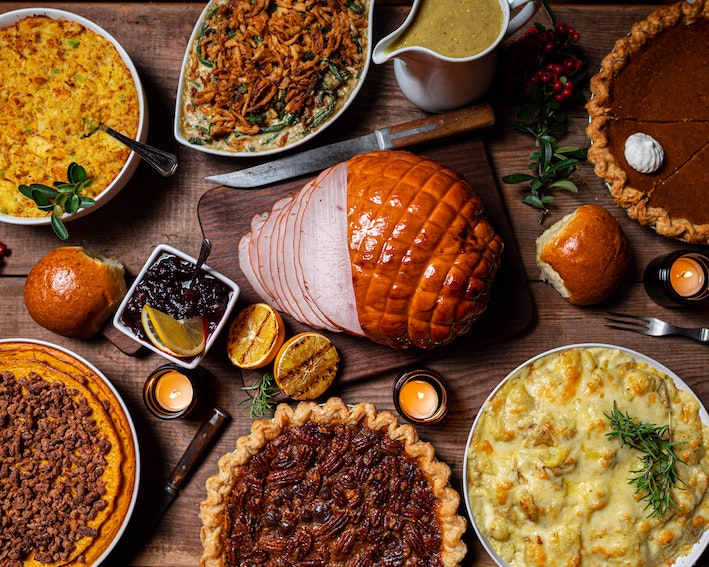Stuffing: The History of a Thanksgiving Staple

With Thanksgiving just days away, the most important aspect is starting to take over our minds: the food. Just kidding! But, meals do play a large role in bringing people together and allowing us to enjoy each other’s company. Staples of the grand course include a turkey, yams, and stuffing. In today’s blog, we’re talking about the history of the latter. And, how the recipes differ around the US.
The History Stuffing
Stuffing (also known as filling or dressing) is an edible mixture often composed of herbs and a starch (such as bread). It fills a cavity in the preparation of another food item including poultry, seafood, and vegetables. As a cooking technique, the mixture helps retain moisture. Additionally, it serves to increase and absorb flavours during its preparation.
Thanksgiving stuffing often consists of breadcrumbs, onions, celery, spices, and herbs such as sage. Additionally, it combines with giblets (heart, liver, etc.) to get the full chicken taste. Some people might think that sounds distasteful, but if you choose to eat meat it’s a great way to use all of the animal. Care must be taken when cooking with meat to ensure it is properly cooked and that the mixture inside hasn’t harboured harmful bacteria. To avoid this, cook the stuffing separately and/or don’t buy pre-stuffed meat.

Other additions include dried fruits and nuts (such as apricots and almonds) and chestnuts. However, almost anything can serve as a recipe with other cultures opting for seasoned rice, minced meat, or even tofu! Additionally, it is often served as a side dish in Thanksgiving meals. Thus, allowing it to be suitable for vegetarians and vegans.
Its Origins
Although the first use of stuffing is unknown, we do have record the first documented use. This is in the Roman cookbook Apicius De Re Coquinaria dating back somewhere between the 2nd and 1st century AD. In here, contains recipes for stuffed chicken, dormouse, hare, and pig. Apicius’s described ingredients of vegetables, herbs and spices, nuts, spelt/farro (an old cereal grain), and giblets.
Over the centuries, the side dish took on a number of names including “farce” (late 14th century), forcemeat (17th century), and, more recently, “dressing” (mid-19th century).
Was it at the first Thanksgiving? Honestly, we don’t known. It is more likely that the pilgrims used ingredients easily abundant and ready to them. Therefore, the meal probably consisted of some kind of bread with a wild rice dish.

Around the United States
In the United States, people can hardly agree on the name for stuffing — let alone the recipe! Here are a few stand out mixtures and the states the originated in.
- New England Oyster. A staple of the Thanksgiving spread, this recipe calls for day-old bread, celery, fresh herbs, and, of course, shucked oysters.
- Southern Cornbread Dressing. You would never call it stuffing in the South! Inside, a dressing is made simply with apples, crush cornbread, butter, and chicken broth.
- New York Cranberry Stuffing. Combine all the tastes of Thanksgiving by mixing sausages, pecans, apples, other vegetables, and cranberries.
- Minnesota Wild Rice. This dish probably most close resembles that eaten at the first Thanksgiving. You will need: turkey giblets, long grain and wild rice, onions and celery, and chicken broth.
- Wisconsin Badger State. Drawing for German roots, sauerkraut and sourdough give this recipe its signature tang.
- North Carolina Chestnut. Chestnuts are a staple Winter flavour. And, what better time to welcome their return to the East coast than with a mixture of fennel, pear, bread, and fresh herbs.
Happy Thanksgiving from all of us at Gooroo!